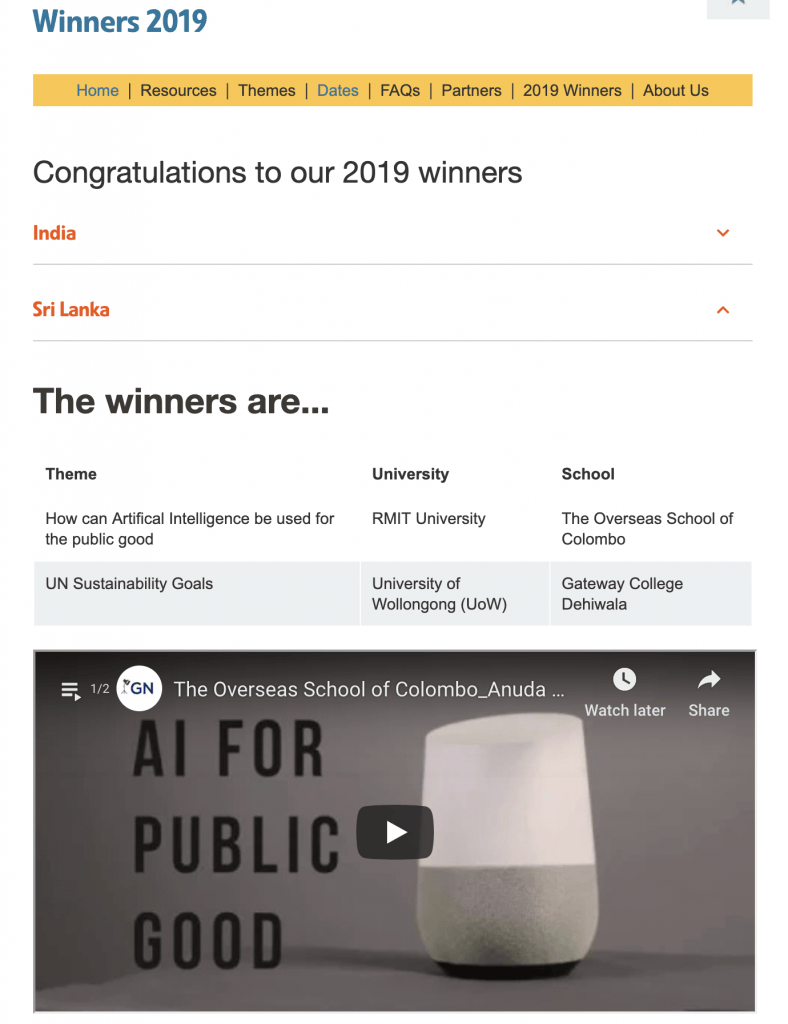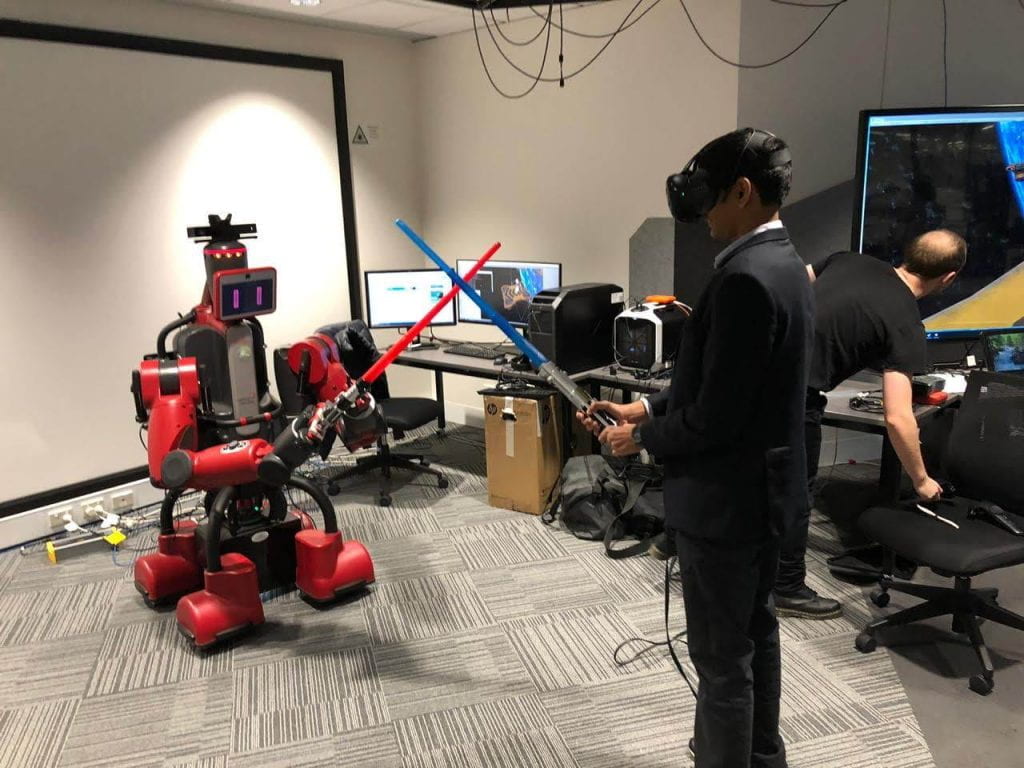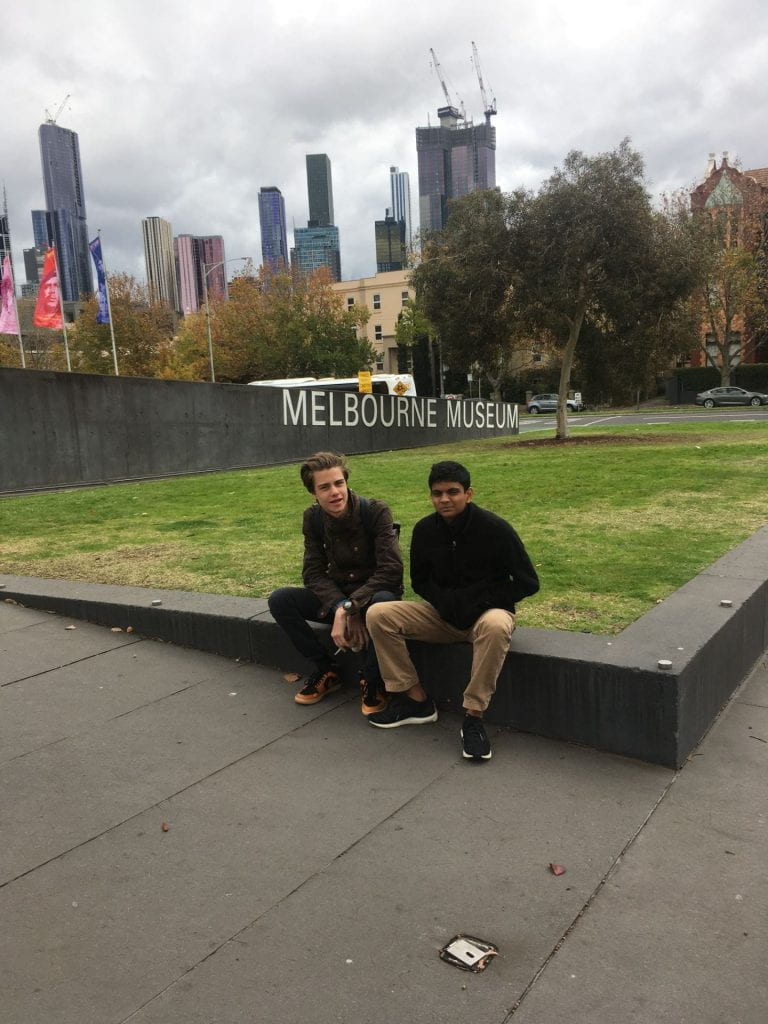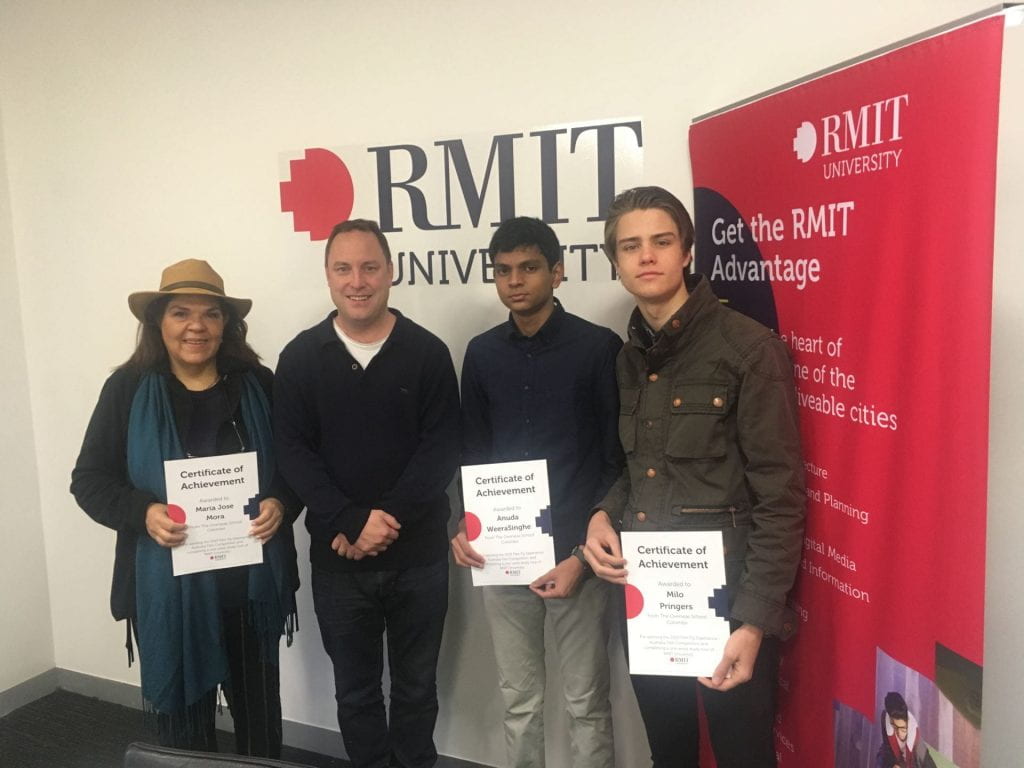Ms. MJ Mora, a GeckoNet supervisor, first brought my attention to the Film Fly Experience Australia video competition the morning before I headed to Chennai to participate in the 2019 SAISA Badminton tournament. The competition was conducted by the Australian Government together with a few Australian universities in order to promote higher education in Australia. Each university sponsored a theme in either India, Bangladesh, Pakistan or Sri Lanka. Participants, in groups of two under the supervision of a teacher, had to produce a 3-minute video addressing a theme posed to their country before the 15th of March 2019. A winning video would be chosen for each of the themes and the winning team along with the supervising teacher would win an all expenses paid week-long trip to the sponsor university in Australia.
My interest in participating peaked firstly after seeing some of the winning videos from last year because having led GeckoNet for almost a year and having been making videos for years, I knew that I could deliver a higher quality product. Things kept falling into place when I learnt that one of the themes for Sri Lankan competitors was “Artificial Intelligence for Public Good” because I had done a course in Machine Learning last summer and was pretty up to date with the latest in AI applications. I approached Milo Pringiers, who I had worked with inside and outside the classroom in SGA, COMUN, and GeckoNet, because he is pretty good at making videos as well and because we work well together. After showing him the winning videos from last year he was onboard, and we were confident that we had a pretty good shot at winning a trip to Australia.
Planning
Despite the initial excitement of participating in the competition, with COMUN 2019 just a few weeks away, we were too busy with COMUN tech work to get started on the video. With the competition deadline being the 15th of March, and COMUN ending on the 3rd of March, we decided that we would get most of the work done in the 12-day window in between. However, after COMUN drew to a close things weren’t going to plan as the IB hit and we were suddenly bombarded with assignments and tests at school; we also realized that Food and Fun Fair, a school event that required student participation, was taking place during the only weekend in our 12-day weekend. We were on our back-foot, when as if the competition organizers could see our plight, we heard that the competition deadline had been extended for another two weeks to the 31st of March.
Thanks to the extension, we could focus on the school assignments and tests that were right in front of us without having to worry about the video competition. After the end of the third quarter at school and things eased off a bit at school, around the 19th or 20th of March we began working on a script for the video. Because I had more knowledge in Artificial Intelligence, we had decided that I would do a bulk of the script writing with a bit of support from Milo. Despite having the knowledge, I wasn’t too sure about how to structure the content, so I consulted my father looking for some help. Because the video had to be just 3 minutes in length, and the theme was pretty broad, he suggested that I structure the video into 3-4 sections — each of which will explain how AI will augment one aspect of society. I took his advice and decided to make the video about how AI will augment natural disaster mitigation, education, agriculture and healthcare. I used my knowledge about potential AI applications in these areas in order to outline the key information for each section. Then, with Milo’s help I began converting these outlines into 150-word paragraphs, which was probably the most challenging part of writing the whole script. We got some feedback from Ms. Mora about the script and a few days later we met at the GeckoNet studio to begin shooting the video.

Shooting and Editing
Although we had a very good script to work with, we weren’t really sure what the video would look like. We knew that the script would become a voiceover in the background of the video, so we began by recording each of us voicing the script. Both Milo and I voiced the entire script, but we eventually decided to go with mine for the video. Thereafter, we opened up a new Premiere Pro project and began laying the groundwork for the video by getting the voiceover to a length of 3 minutes. Despite speeding it up to almost 150% the original speed, we were still over the 3 minute mark. Therefore, we decided to cut the education section entirely because it was pretty long and didn’t really include any novel information.
We had some good content packed into 3-minutes, but we still weren’t sure what the visual aspect of the video would look like so I went to my father looking for advice yet again. After showing him what we had, he complemented our progress thus far, and then he mentioned that the best way forward was to add hand drawn animations that match the audio. His argument was that making an animated drawing style video would convey the densely packed information more effectively than any other visual. I agreed, but was skeptical at first because I knew that properly doing the animation using Adobe After Effects would take a lot of work, and because I didn’t have a particularly good experience with software like Powtoon, which is designed for drawing style animations.

By the next time I met with Milo to work on the video, it was pretty clear that we didn’t have any ideas for the visual aspect of our video so I mentioned my father’s suggestion to Milo. It was the best idea we had so we decided to roll with it and Ms. Mora also agreed that it was a good idea. She suggested an app called Sparkol, which she had used in one of her classes; Sparkol seemed pretty good, but unfortunately the software didn’t seem to have a free version. That’s when Milo suggested that we just do it from scratch and actually record ourselves drawing on a whiteboard. Neither of us were confident about the idea, but we knew it would be really cool if we managed to pull it off so we decided to give it a shot, whilst Ms. Mora was willing to pay for Sparkol if we weren’t happy with the results. We decided to use the tables with whiteboard esque glossy tops in the Makerspace, and quickly realized that we wouldn’t be able to use our Canon DSLR camera because we didn’t have a tripod with an overhead mount. We had to go low tech and shoot on an iPad because the iPad tripod mounts we had could be tilted to any angle and was perfect for the overhead shot we were looking for. Since I don’t have much artistic talent, Milo was going to do all of the drawing. While he planned the drawings he was going to do for the Natural Disaster Mitigation section at the start of the video, I setup the iPad and some lights as seen in the image above. The results were pretty good and by the end of that meeting we had settled on doing the drawing animations for the video, and we had completed the drawings for one of the three sections.

We met again a few days later on the Friday before the deadline, looking to work all day and finish up the video. Milo had already planned the drawings for the rest of the sections based on the script, so he was ready to power through the shooting stage. As seen in the image above, this time around we mirrored the iPad’s display to a display in the GeckoNet studio so that Milo could check the framing of the shot and do the drawing and recording by himself, whilst I worked on editing. Editing this video was quite a challenge because it was like no other video I had edited before. I had to first take footage from the iPad that was 10-20 minutes long, and speed it up to just a few seconds long. Then, I had to splice the footage and retime it so that the drawings matched with the voiceover. Finally I had to zoom in and change the position of the footage , whilst continuously adding key frames in order to create the effect of a camera moving from one drawing to the next based on the content in the voiceover. Editing this video required a serious attention to detail and the entire day to complete. In fact, my computer which is quite powerful took almost an hour to render and export this 3 minute video because it was made up of hours-worth of iPad footage sped up to almost 10000% percent. The only issue that bothered me at the end of the edit was the resolution of the video — some parts looked really pixelated because we had zoomed in on already low resolution iPad footage. Nevertheless, all of us were pretty satisfied with the final product, especially because it was completely produced with our own content and we had done the best we could with the resources available to us. We came back to school on the next day, and added some finishing touches like a bibliography at the end and submitted the video. You can see the final video below.
Winners!
The judging process would take two weeks and the winners would be notified on the 12th of April, the first day of our spring break. Both Milo and I were proud of our final product, but we were also a bit nervous about the outcome — things had seemed to have gone a bit too good to be true in the last few weeks. I kept anxiously checking the competition website for an update almost everyday since our submission, but for some reason I didn’t do so on the 12th of April. It was the first day of spring break, so I had slept in, put my phone to charge and was watching some cricket on TV. Almost an hour later, when I returned to my room and checked my phone, I was greeted by the following messages on WhatsApp. Spoiler alert — we won!

We had to do some paperwork before we could claim our prize, so I headed to school with my parents and got it done; Milo had already left the country, so he had to do it digitally and send it across. Shortly afterwards, the competition website was updated with the winners from this year’s competition as seen in below.

We began planning our trip to The Royal Melbourne Institute of Technology during the final week of May, which also happened to the week of final exams at school. This wasn’t an issue, as the secondary school principal was willing to reschedule our exams so we could participate in this great experience. However, just a few days later, everything grinded to a standstill when school was indefinitely closed due to security concerns after the Easter Sunday Bombings in Colombo. When we came back to school a few weeks later, the plan was to postpone the trip until the next academic year in August because we had already missed so much time at school. However, when organizers of the competition responded that the only option would be a trip in late June during our summer vacation, we were pretty disappointed because neither Ms. Mora nor Milo would be able to join as they had already planned to be overseas, and I wasn’t looking forward to travelling to Australia by myself. However, like everything else in this entire endeavour that had fallen right into place, suddenly, out of nowhere the organizers mentioned that we might be able to travel at the end of May as we had originally planned. Everyone stepped up to the occasion, and in the short span of around 10 days we were ready to travel to Melbourne. Since we didn’t have time to take exams before the trip, they were postponed until we returned; however, the condition was that we had to take 3 exams per day and finish them in two days.
Going Down Under
We departed from Colombo early on the 26th of May, and after spending a week in Melbourne, Australia, we arrived on the 31st of May. Despite having exams hanging over our heads, and having to study during the trip, we had a great time in Melbourne. We did some of the usual touristy stuff like visiting the Melbourne Museum, Zoo, the Eureka tower skyscraper and quite a bit of shopping. However, we also had some amazing experiences at the RMIT university. We got to meet the Dean of Computer Science at the university, Mr. John Thangarajah, who happened to be a Sri Lankan, and spend an hour talking about cutting edge technology in AI, and our plans for the future. His advice on our future university decisions based on his own experiences was really honest and enlightening. We were also introduced to a football playing Nao robot and some of the problems that come up when trying to program a robot to intelligently play football with a team, by Mr. Tim Wiley, a Computer Science professor at the university. We also got to experience the university’s state of the art virtual reality lab; I had experienced some virtual reality mainly with headsets powered by smartphones, so this was an amazing experience. We got to experience the Microsoft Hololens mixed reality headset, the HTC vive virtual reality headset and some of the unique applications that RMIT students had built using this hardware. One such application was a VR light saber battle experience with the HTC vive and a robot, which was really cool. After spending a week on the RMIT campus, I was pretty impressed with the university and its facilities; I hadn’t considered going to Australia for my higher education, but after this experience I might apply there.
Overall, Film Fly Experience Australia 2019 was an amazing experience. We produced a great video that greatly improved my video editing, and production skills as well as my time-management and collaboration skills. Winning the competition, and getting to travel to Australia put the icing on the cake that was the whole experience. Hopefully, I’ll have the time to participate in many more competitions like this one, but until then here are some pictures from our trip to Melbourne.







Comments